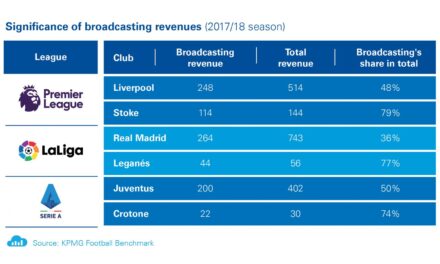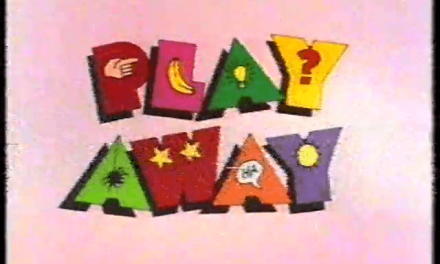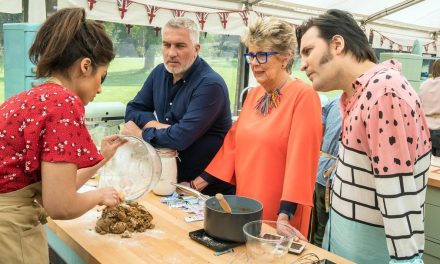Episode 4 of the Icelandic drama Trapped (2015), currently showing on BBC 4, finished with a spectacular avalanche. The avalanche had been predicted by one of the characters who then triggered it in the hope of diverting it away from the town. But the event itself generated hardly any suspense about the fate of characters who might be caught in its path. Instead it offered the viewer a piece of visual spectacle in which nature thundered across the HD screen which was of course necessary to appreciate it. Usually I object to the adjective ‘cinematic’ being used to describe good television as its use involves the rather pernicious hierarchy which HBO invoked with its slogan: ‘it’s not television’. But here ‘cinematic’ seemed exactly the right term.
This is not surprising since Trapped (Ófærð) is a production by RVK Studios, Icelandic film production company, and it was created and produced by Baltasar Kormákur who also directed two of the ten episodes. Kormakur is an internationally successful film director responsible for among others, Everest (2015), 2 Guns (2013) and Contraband (2012). Trapped has the long list of co-producers more often associated with cinema including ZDF, SVT, RUV, YLE, DR1, DRK & France Télévisions. The first episode of the drama was shown at the 2015 Toronto Film Festival in the Primetime slot which allows certain kinds of television to be screened at a film festival. Not surprisingly, Trapped is estimated to be the most expensive television series ever made in Iceland, costing about one billion krónur (ISK) (over 6.5 million euro) overall.
Trapped is set in Seyoisfjorour, a remote village in the east of Iceland, and much of its appeal lies in the way the ferocious weather shapes and transforms the frozen landscape.


People in the landscape are well wrapped up and try to keep their faces away from the wind and snow. So, as television drama, it seemed at odds with the kind of television drama described by Tony Garnett when interviewed by Lez Cooke in 2000: ‘For me the screen is about a close up . . . The only landscape that really interests me is the human face’ (p.108, Style in British Television Drama, Palgrave, 2013). Cooke’s book in fact develops its account of the aesthetics of television drama by focusing on internal spaces, domestic scenes around the dinner table. Through detailed accounts of scenes from key dramas such as Coronation Street (1960) and This Life (1996), he shows how television style developed and changed while always keeping a focus on the intimate exchanges, visual and verbal, which are possible when people gather to eat.
Now however British drama is embracing the landscape possibilities of television in for example Vera (ITV, 2011 – ) and Shetland (BBC, 2013 -), now in their sixth and third series respectively. Shetland’s titles like those of Trapped make an almost abstract image out of the landscape and the characters are often rendered small by the picturesque landscape.

The pale face and reddish hair of Douglas Henshall, as DI Perez, embody the character’s melancholy temperament and his Scottish face fits the harsh beauty of the Shetland landscape.

Vera too makes much of the scenic spectacles of the moors and the sea where the murders Vera is investigating take place.

But here there seems to be an awkwardness in how to combine an emphasis on the landscape with the need to access what the detective is thinking. Vera’s character is important to the programme and Brenda Blethyn uses the expression on her face to offer Vera’s knowing, slightly cheeky resilient comment on the bleak crimes she investigates. She is thus regularly shown, face to camera, looking at us from out of the landscape but not entirely at ease in it.

(These comments make a link to my earlier blog changing modes of detection.)
With television’s new interests in landscape, it is interesting then that the second series of Happy Valley (BBC, 2104 – ), while featuring visually striking Yorkshire moorland, nevertheless sticks much of the time with a focus on the face in close-up and indeed frequently shows characters connecting over the (dining) table. Episode 3 began with an eight-minute scene of the heroine Catherine undergoing a compulsory therapy session; Sarah Lancashire’s performance of the range of contradictory emotions in this exchange was remarkable.
The episode also offered another performance tour-de-force as a detective (played by Kevin Doyle) watched a post-mortem being undertaken on a woman whom he had killed. But less showily, Happy Valley makes use of the visual opportunities offered, as Cooke has suggested, by characters grouped round a table, in a domestic setting:

and even to sinister effect in a prison:

So I think Tony Garnett may have a point. The avalanches and dramatic landscapes are undoubtedly engaging. But it takes quite a lot to beat the drama of the human face.
Christine Geraghty is an Honorary Professorial Fellow at the University of Glasgow. Her publications on television include a contribution to the 1981 BFI monograph on Coronation Street; Women and Soap Opera (Polity, 1991); and My Beautiful Laundrette (I B Taurus, 2004). Her BFI TV Classic on Bleak House was published in 2012 and her reflections on the beginning of her work on soap opera appears in ‘The BFI women and film study group 1976 – ?’, Renewing Feminisms, Radical Narratives, Fantasies and Futures in Media Studies H. Thornham and E. Weissmann (eds) I B Taurus 2013. She is on the editorial board of the Journal of British Cinema and Television and sits on the advisory boards of a number of journals, including Screen.





